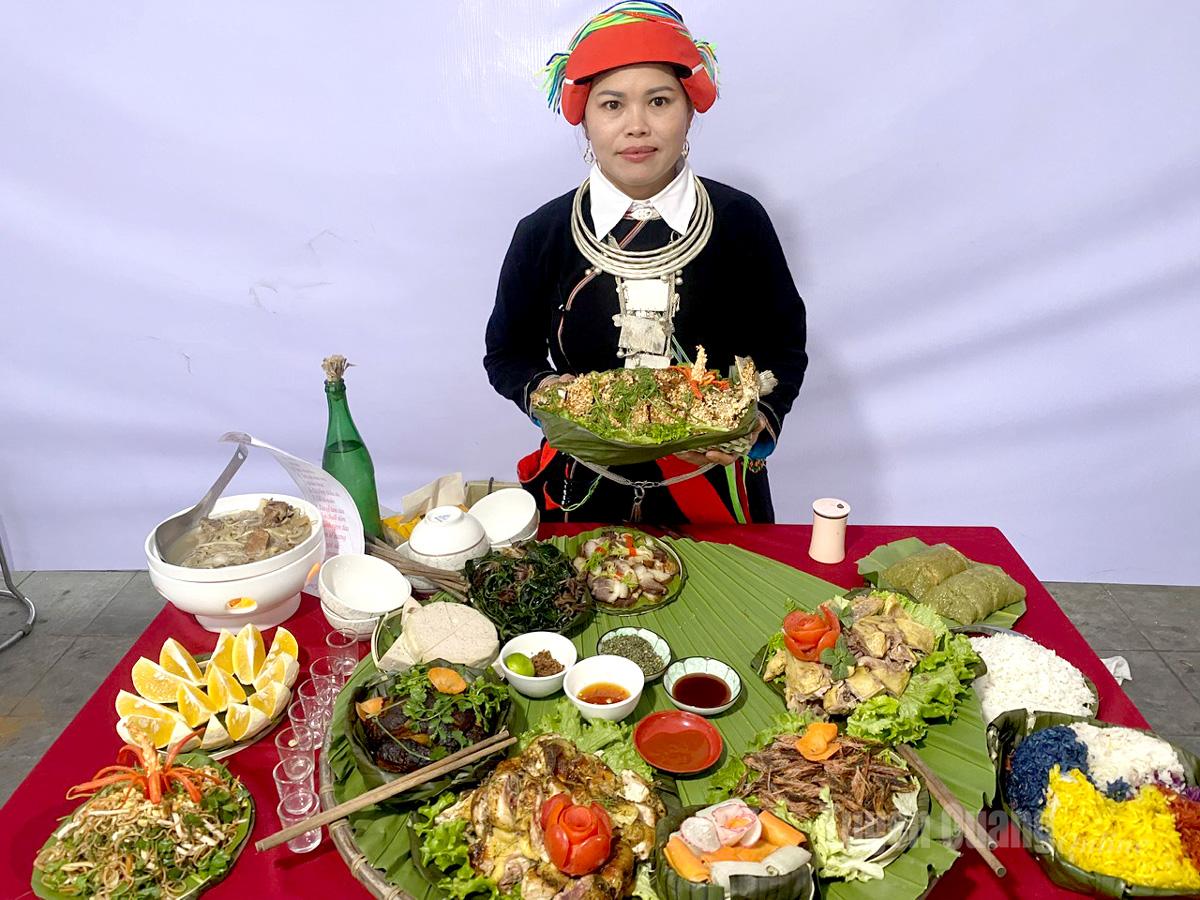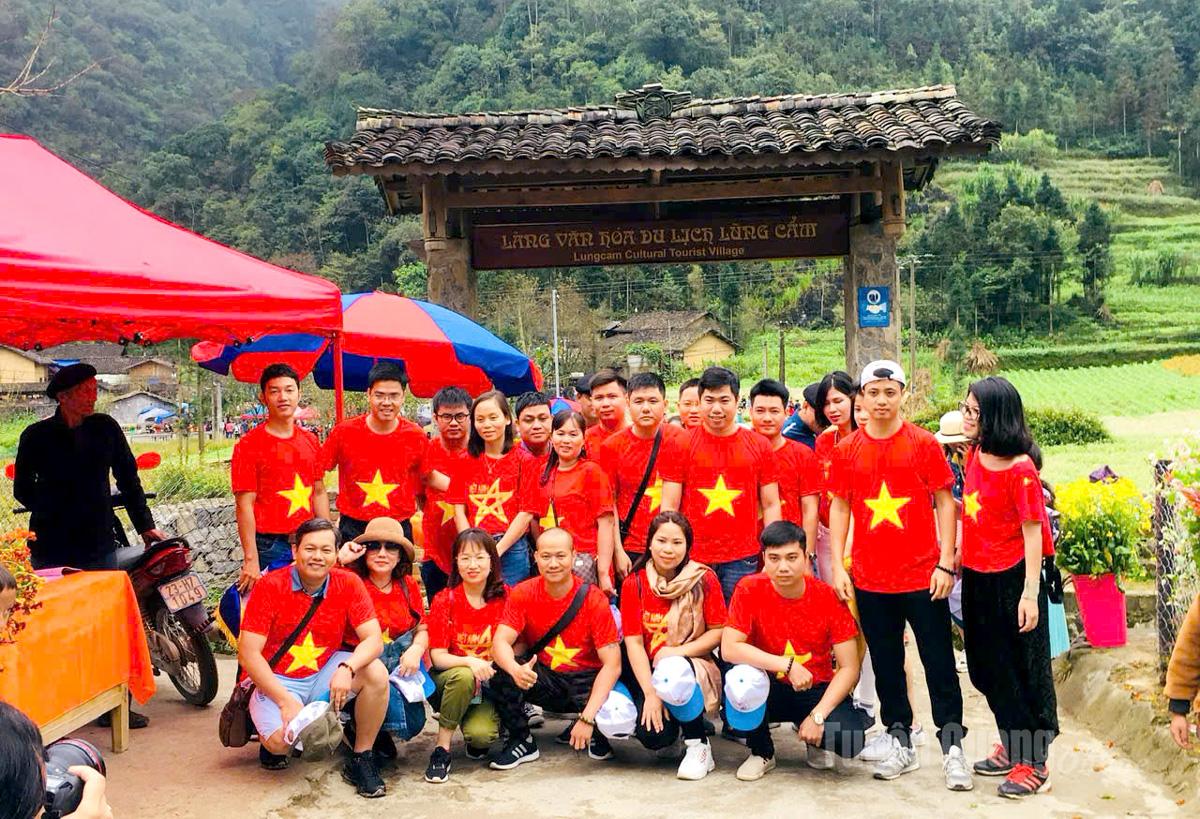
Ethnic delicacies attract travelers
Traditional ethnic cuisine-a key draw in community-based tourism.
Once a model for community-based tourism, the Dong Van Karst Plateau Global Geopark set the tone with its unique grassroots experiences: Traditional homestays, pristine cultural spaces, and tourism rooted in daily life and heartfelt hospitality. Meanwhile, Tuyen Quang charms visitors with its quiet beauty-morning mist over Na Hang Lake, the soft melody of Then songs beside a fire in Lam Binh, and the traditional stilt houses of the Cao Lan people in Yen Son. Here, visitors live among locals-sharing rustic meals, listening to the Tinh lute, and sleeping beneath yin-yang roof tiles-simple pleasures infused with soul.
What unites these two regions is a shared philosophy of “quiet tourism,” where locals lead the way, crafting authentic experiences from familiar elements: The home, the song, the jar of leaf-fermented rice wine, a meal of corn, or a handwoven brocade. In Pac Cap Hamlet (Phu Luu), villagers guide forest treks, tell ancient Tay folktales, and cook traditional dishes-just like the welcoming rituals of the Lo Lo people at Viet Nam’s northernmost frontier. It is this sense of ownership and cultural pride that breathes life into community-based tourism.
Ancient Shan Tuyet tea trees-a renowned specialty of Tuyen Quang.
As it moves forward, Tuyen Quang draws upon the northern mountains’ success stories-villages nestled on mountain slopes, the sound of the khen flute, bowls of “men men” cornmeal, and a way of life rich in ethnic character. In defining its unique identity, the province now boasts three homestay cooperatives certified with 3- to 4-star OCOP ratings. These are tied to experiences featuring local specialties like wild honey, Shan Tuyet tea, Lam Binh corn liquor, and “chim gau” cakes of the Cao Lan. Infrastructure is improving, too-from the Tuyen Quang–Phu Tho expressway to the “Tuyen Quang Tourism” app and free Wi-Fi at major destinations-helping elevate the profile of community-based tourism.
The draft Political Report of the 18th Tuyen Quang Provincial Party Congress (2025–2030 term) outlines a clear vision: “Develop tourism into a truly key economic sector; focus on effectively tapping distinctive tourism sites while preserving ethnic cultural heritage; expand community-based, ecological, resort, and experiential tourism; and build the Tuyen Quang brand as a safe, friendly, and distinctive destination.”

Lung Cam Cultural Village, the most-visited site in the region
Lung Cam Cultural Village-an iconic stop in the heart of the Dong Van Plateau.
Between 2021 and 2024, Tuyen Quang welcomed nearly 10 million visitors, generating over 10.6 trillion VND (approx. 415 million USD) in revenue and creating livelihoods for some 22,000 people-most of them ethnic minorities living in remote areas. By 2030, the Na Hang–Lam Binh ecological area is set to become a national tourism site, while Tan Trao is positioned to become a hub for cultural, historical, and educational tourism.
From the Tan Trao banyan tree-the cradle of the revolution-to the Lung Cu Flag Tower-the northernmost tip of the country-this newly merged province carries a sacred heritage, steeped in history and rich in identity. Quietly and steadily, community-based tourism is taking root in stilt houses, in the soft rhythms of Then songs, in the spirited dances of Mong youth-spreading gently, yet powerfully. It is this simplicity that serves as the soft thread connecting past and present, people and heritage-shaping a tourism brand for Tuyen Quang that is enduring, distinctive, and unforgettable.
Nguyen Thanh Hieu
Vietnamese data source: Bao Tuyen Quang







